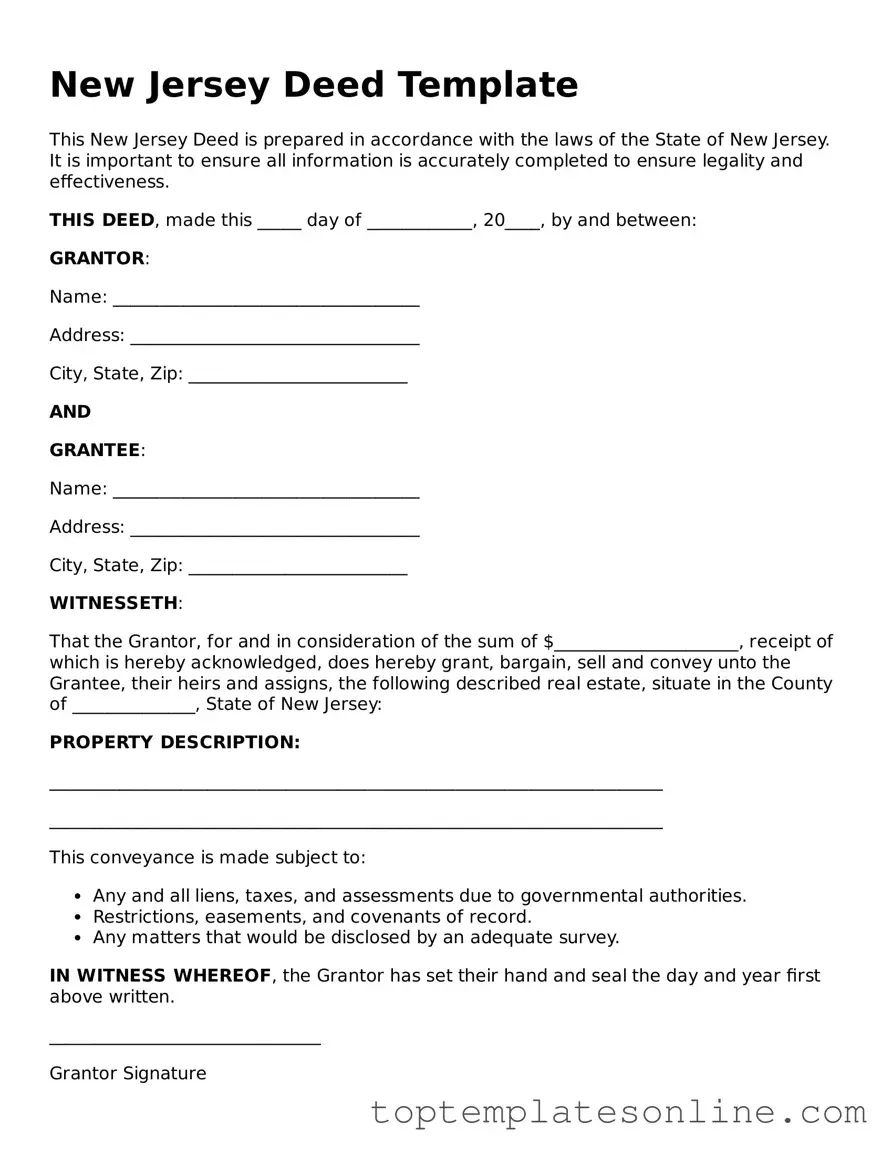Blank Deed Template for New Jersey State
A New Jersey Deed form is a legal document used to transfer ownership of real property from one party to another. This form ensures that the transaction is recorded properly and provides necessary details about the property and the parties involved. Understanding how to fill out and file this form is essential for anyone looking to buy or sell property in New Jersey.
Customize Deed Here
